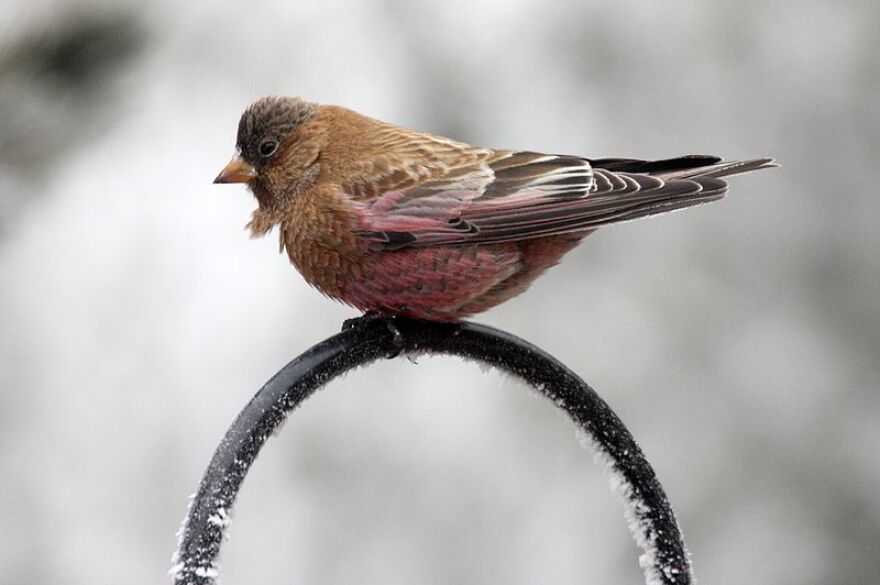Groups of people with binoculars will be counting wild birds next Sunday (12/15/2013.) It is part of the annual Christmas Bird Count for the National Audubon Society. This will be the 114th annual count and mark one of the largest and longest running citizen science efforts in the world. APR’s Roger Adams reports.
In the Upper Valley the count will take place inside of a defined area.
“It’s a circle that we’re counting birds within. Basically it’s a circle drawn on a map.”
"Once you get enough people out there over time counting birds all over the place in the same way at the same time of year every year you really start to get wonderful trend data."
Rebecca Weiss is charge of the Christmas count in the Aspen area. Weiss is a Naturalist who runs the birding program at the Aspen Center for Environmental Studies. This year Weiss and other birders will fan out within the designated count boundaries, counting birds in a variety of habitats.
“And the center of that circle is close to Cozy Point Ranch. And, its drawn that way to include all four ski areas and as much territory around here that’s accessible in winter that we can reasonably get around in and count birds.”
Weiss’ birder crew will join tens of thousands of people around the Americas who will be counting birds this weekend. For more than a century the Christmas Bird Count has collected data for the National Audubon Society. Its been called one the world’s largest and longest running citizen scientist data collection projects. All these tallies of everything from House Sparrows to Bald Eagles are creating a macro-picture of the world’s avian species; how healthy they are and what threats they face.
Geoff LeBaron is director of the Christmas Bird Count for the National Audubon Society.
“Once you get enough people out there over time counting birds all over the place in the same way at the same time of year every year you really start to get wonderful trend data.”
There are now trend data stretching over 113 years. As anyone following the natural world knows much of the data bring bad news. There are certain species, sometimes groups of species that are in trouble and on the decline. Still, nature is resilient and ever changing and there is some good news for birds too.
“There is. Its not all bad news.”
As land use and the climate change some species of birds are actually thriving.
“Many of the woodland species are actually doing fairly well. Also, with the increased protection of wetlands, some of the water related birds are doing quite well. The other things that’s also very good news is the recovery of many of the raptors that had their numbers severely decimated by the effects of DDT.”
DDT is an insecticide that was widely used in agriculture following WWII. It was eventually banned in 1972 because it weakened the egg shells of birds, especially those of raptors like the Bald Eagle. Climate change will likely be the biggest catalyst for changes in the avian world. As the earth warms bird species will begin to move.
“Audubon in 2009 actually did a large scale analysis of Christmas bird count data that we called birds and climate change.”
This report showed hard evidence that some species are moving their ranges in response to changing temperatures, especially winter temperatures.
“What we documented for the first time, we looked at 305 species, the great majority of those species have moved as much as 200 miles northward from the (19)60’s to the present.”

Of particular interest to Audubon are birds that live in upper elevations. Colorado is the sole home to one of those; the Brown-capped Rosy Finch.
“Almost all the Brown-capped Rosy Finches in the world are in the Rockies in Colorado above tree line. As climate warms and changes, those habitats aren’t going the have an opportunity to move, they’re just going to disappear. And those are some of the birds that most potentially at risk.”
The Aspen area bird count will include some habitat of the Brown-capped Rosy Finch. Naturalist Rebecca Weiss says its hard to make conclusions from the limited scope of the local count. Its when the local data are added to the macro-survey that trends emerge. Her experience is that things change from year to year.
“Last year, we had an incredibly high number of American Dippers. That indicates something, whether the food resources around here were amazing or whether we do have a local boom in their population. Last year we also had Common Redpoll, which are a brand new species for our Christmas bird count in Aspen. They typically aren’t found this far south in the winter.”
The bird counting begins early Sunday morning. Experienced birders are always part of the count and Weiss says anyone interested in learning birding or just in the annual bird count will have a great time.
“I encourage people who are new to birding definitely to come because we pull out the big guns that day. The top birders in the valley come and you could be in a group with them.”
Birders will gather at ACES in Aspen on Sunday morning and the official counting begins at 8 AM. Down Valley another crew of birders with the Roaring Fork Audubon Club will also be out counting. Information about how to participate in a local bird count is linked below.
National Audubon Society - Christmas Bird Count
The recording of the Brown-capped Rosy Finch came from the Macaulay Library at the Cornell Lab of Ornithology – click here.







